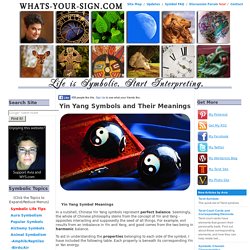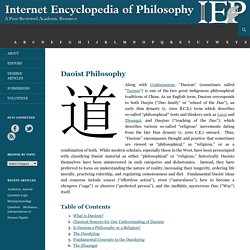

Bisection of Yin and Yang. The flag of South Korea (and of Kingdom of Korea from 1883) contains the ancient yin-yang symbol (Taijitu in Chinese, Tomoye in Japanese and Taegeuk in Korean) that represents the struggle, merger and co-existence of two opposites (could be hot/cold, male/female, sky/earth, moon/sun, etc.)

In the diagram Yin (the negative aspect) is rendered in black, with Yang (the positive aspect) rendered in white. The symbol is composed of two regions of a circle separated by two semicircles of half the radius of the big circle. The famous English puzzlist H. Solution 1 This one requires no proof. Solution 2 Part of the Yin (black) piece below the horizontal diameter of the big circle is a semicircle with area πR²/8, where R is assumed to be the radius of the big circle, so that the small semicircle is of radius R/2.
Solution 3 The dashed circle has radius R/√2. Solution 4 Solution 5 For this proof, we set x = R(√5 - 1)/4. Solution 6 Application of the Carpet Theorem Area(S1 ∩ T1) = Area(S2 ∩ T2). Reference. The Secret of the Golden Flower. Translations[edit] "Gathering the light" -- an illustration of the first stage of meditation There are significant differences between the Wilhelm and Cleary translations. Wilhelm was introduced to the work by his Chinese teacher,[2] while Cleary arrived at his own translation and interpretation. Some translations are given with the word mystery for the word secret in the treatise's title.
Classic works of Chinese philosophy preserve a spectrum of pre-modern science, from a time when philosophy and science were less distinct than they appear to be now.[3] The foundations of their teachings often appear incompatible with modern science, yet the teachings are of significant efficacy in providing a degree of awareness that might otherwise remain obscured by modern society’s attention to more stringent standards of rational thought (for a further discussion of possible benefits, see Meditation). Meditation Technique[edit] Taoist Alchemy: Neidan and Waidan. The Golden Elixir ▶ Taoist Alchemy Fabrizio Pregadio Background Liu Haichan, a Taoist immortal associated with several alchemical traditions Taoist alchemy aims to afford an understanding of how the cosmos and the human being are related to the highest principle, the Dao.

Practitioners rise through the hierarchy of the constituents of being by "fulfilling" (Chin. jin or liao, two words also denoting "thorough knowledge") the nature and properties of each stage. Historical and literary sources (including poetry) provide many important details on Taoist alchemy, but the majority of sources is found in the Taoist Canon (Daozang), the largest collection of Taoist texts. Modern study of Taoist alchemy began in the twentieth century, after the Canon was reprinted and made widely available. Although the underlying doctrines remained unchanged, Chinese alchemy went through a complex and not yet entirely understood development along its twenty centuries of documented history. Doctrines History . . .
Yin Yang Symbols and Their Meanings. Yin Yang Symbol Meanings In a nutshell, Chinese Yin Yang symbols represent perfect balance.

Seemingly, the whole of Chinese philosophy stems from the concept of Yin and Yang - opposites interacting and supposedly the seed of all things. For example, evil results from an imbalance in Yin and Yang, and good comes from the two being in harmonic balance. To aid in understanding the properties belonging to each side of the symbol, I have included the following table. Each property is beneath its corresponding Yin or Yan energy. Daoist Philosophy. Along with Confucianism, “Daoism” (sometimes called “Taoism“) is one of the two great indigenous philosophical traditions of China.

As an English term, Daoism corresponds to both Daojia (“Dao family” or “school of the Dao”), an early Han dynasty (c. 100s B.C.E.) term which describes so-called “philosophical” texts and thinkers such as Laozi and Zhuangzi, and Daojiao (“teaching of the Dao”), which describes various so-called “religious” movements dating from the late Han dynasty (c. 100s C.E.) onward. Thus, “Daoism” encompasses thought and practice that sometimes are viewed as “philosophical,” as “religious,” or as a combination of both. While modern scholars, especially those in the West, have been preoccupied with classifying Daoist material as either “philosophical” or “religious,” historically Daoists themselves have been uninterested in such categories and dichotomies. Table of Contents 1. 2. 3. 4. 5. The term Dao means a road, and is often translated as “the Way.” 6. 7.